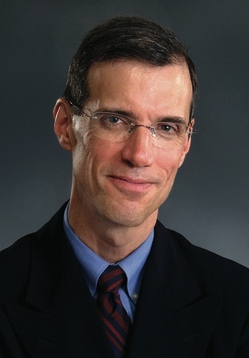
State Sen. Will Brownsberger
As a legislator, I’ve been concerned to reduce our contributions to climate change. Over the last few weeks, I’ve been trying to better understand the local flooding risks caused by the climate changes we seem unable to prevent.
It’s hard to know how much the seas are going to rise. First, no one knows how much the people of the world will be able to reduce carbon emissions. Second, even within a given emissions scenario, the uncertainties are considerable. For example, if we just assume continually growing emissions, the estimates of probable local sea level rise vary by a factor of two from 3.2 feet to 7.4 feet by 2100.
Much of Boston lies quite low, so these uncertainties matter. Given the huge uncertainties about long term sea level rise, local planners are mostly not looking past 2070. Within that horizon, the uncertainties are more manageable. In that time frame, it is clear that Boston will not be submerged like some low-lying islands in the Pacific; rather, what we face is a modestly increased risk of extreme storm flooding.
My senate district includes Belmont, Watertown and Boston along the Charles. These areas are either elevated or well-protected by the seawalls at the mouths of the Mystic and the Charles. They therefore face fairly limited new risks through 2070. Some coastal areas face much more immediate risks.
We all need to be concerned to protect our shared regional infrastructure — our tunnels, our transit system, our power grid, our water and sewer systems. If storms knock out critical infrastructure components, the losses go well beyond just the cost of repair. For example, if the central artery/tunnel or our subway tunnels were flooded and unusable for a few weeks or months, the regional economy could be damaged and take years to recover.
My sense from the recent studies is that many smaller projects have clear value in improving near and medium-term resiliency. Gaps in land barriers need to be filled, tunnel entrances protected, vent structures elevated.
To identify and implement those higher payback projects, we need to do two things: We need to push for the formal vulnerability analyses to continue. At the same time, we need to assure that each of the agencies that own infrastructure has the resources necessary to build and retain institutional knowledge of the particular assets they own. The engineers and operators who work outside every day are the ones who can most readily identify specific vulnerabilities.
It will remain a continuing priority for me as a legislator to assure the comprehensiveness of infrastructure vulnerability assessments and to support infrastructure agencies with the funding they need to maintain strong teams.
It will also remain a continuing priority for me to keep up with the climate science. As new results emerge, we may need to change our approach. The world’s big ice masses in Greenland and Antarctica are the wild cards. New understandings of how they are responding to warming may force upward revisions in our expectations for sea level rise. Changed expectations could give more urgency and credibility to the more ambitious defensive proposals, like a harbor barrier.
Finally, it will remain a continuing priority for me to keep talking about these issues. Citizens and business need to have access to the latest available understandings and make their own judgements about how they want to manage risks.
I’ve posted a set of current local resources on climate and flooding at willbrownsberger.com.
A reminder from Trees for Watertown:
There are areas of Watertown that routinely flood when we get severe storms. We can reduce flooding by creating opportunities for storm water to be naturally absorbed before it can reach streets and basements.
A great way to do this is to increase the number of shade trees on our streets. A big healthy shade tree can absorb hundreds of gallons of storm water annually via its root system. There are other storm-water-related benefits too: Tree canopy shelters the area beneath from heavy downpours. Transpiration, the evaporation from a tree’s leaves of the water absorbed by its roots, helps trap contaminants from the air and helps reduce the ambient temperature on hot days.
Flooding is reduced by replacing impermeable asphalt and concrete with permeable surfaces at every opportunity. Using permeable pavement for sidewalks near street trees, and routinely widening the planting area for street trees, increases permeable surface area and helps street trees achieve long healthy lifetimes.
“payback projects”- (via DW’17) COP23: High time to curb emissions as 2017 to become hottest year on record//Sea levels have risen further and ice in the Antarctic moved towards a record low; & (via WSJ’18) – Boston Agonizes Over How to Protect Itself From Future Storms//Cities that designed protections for past floods find future ones may be worse, but changes carry huge price tags